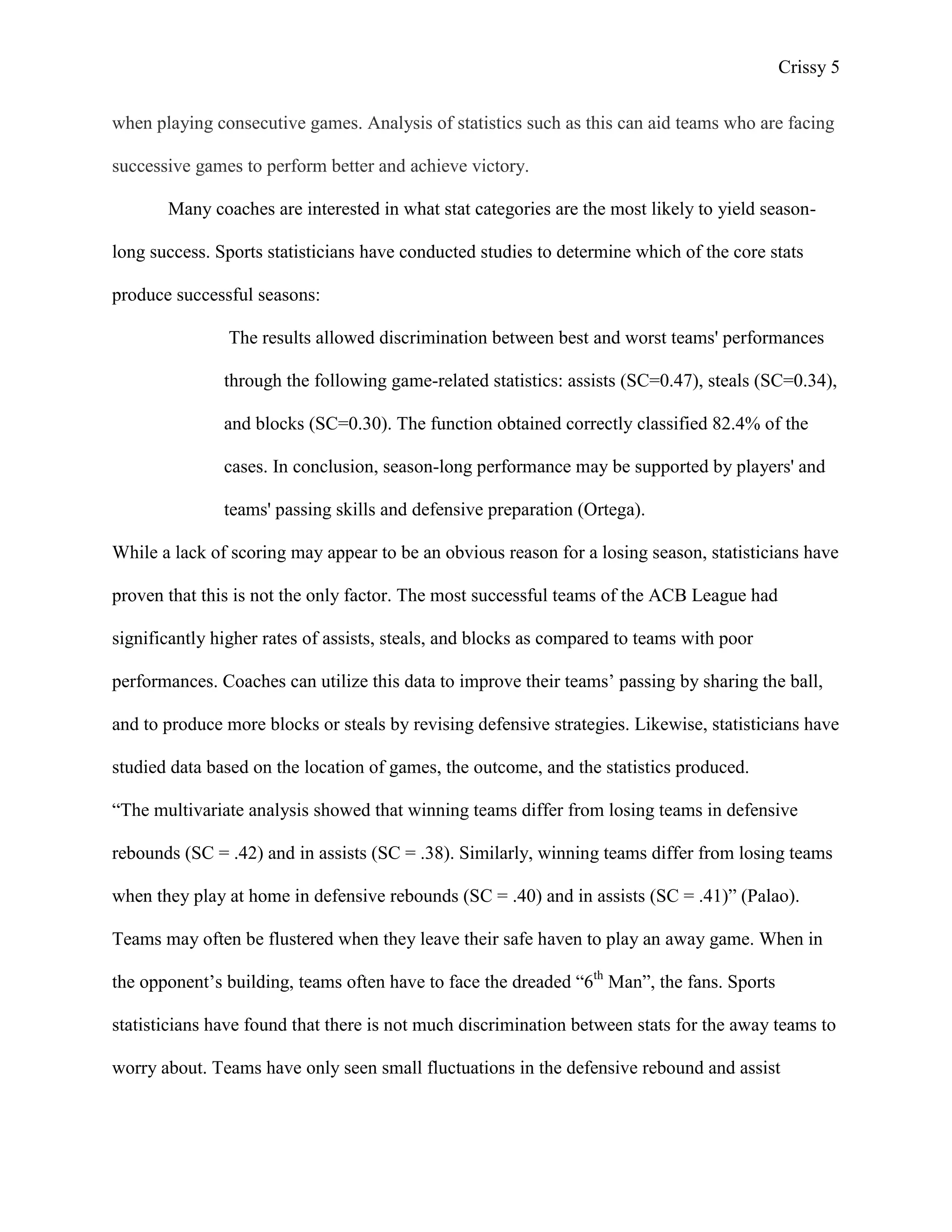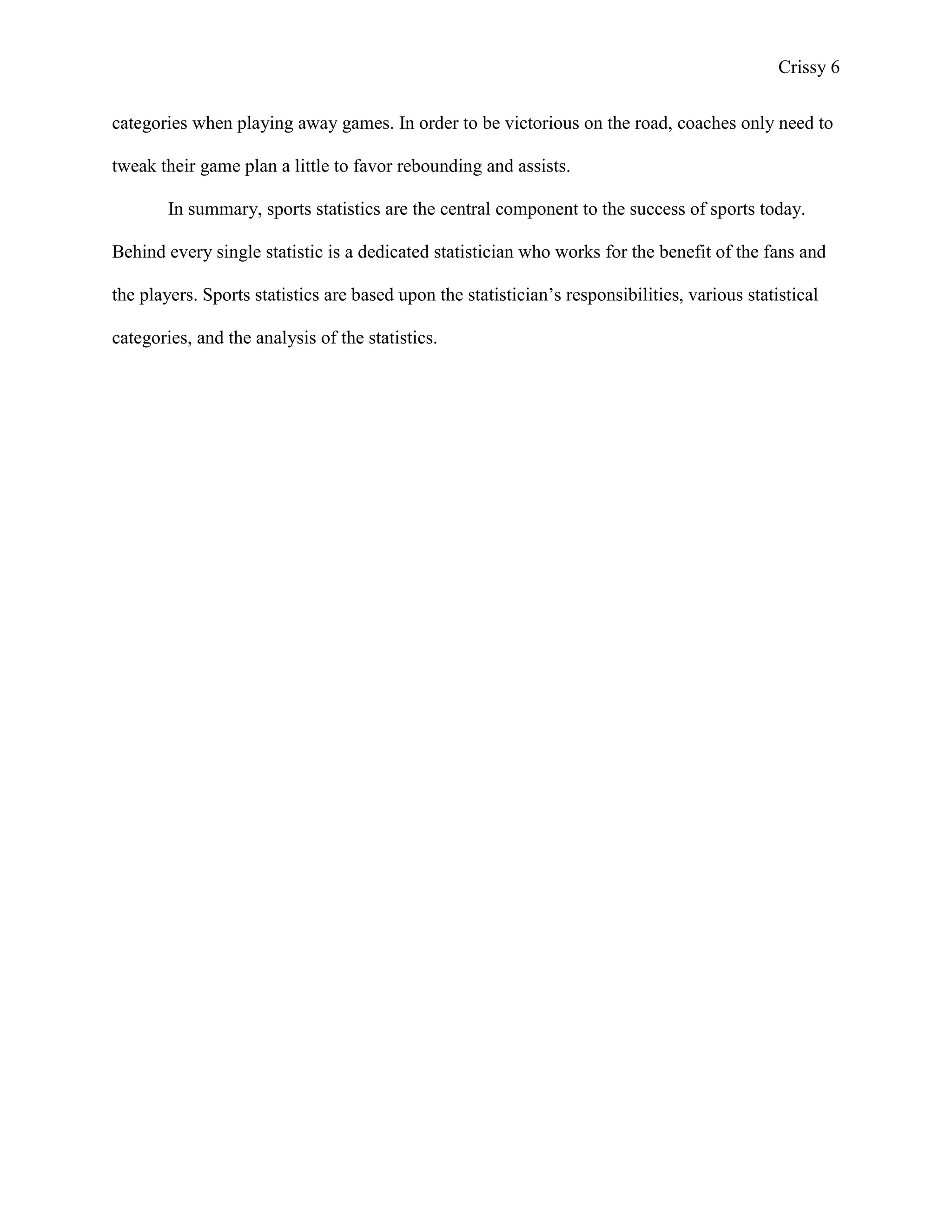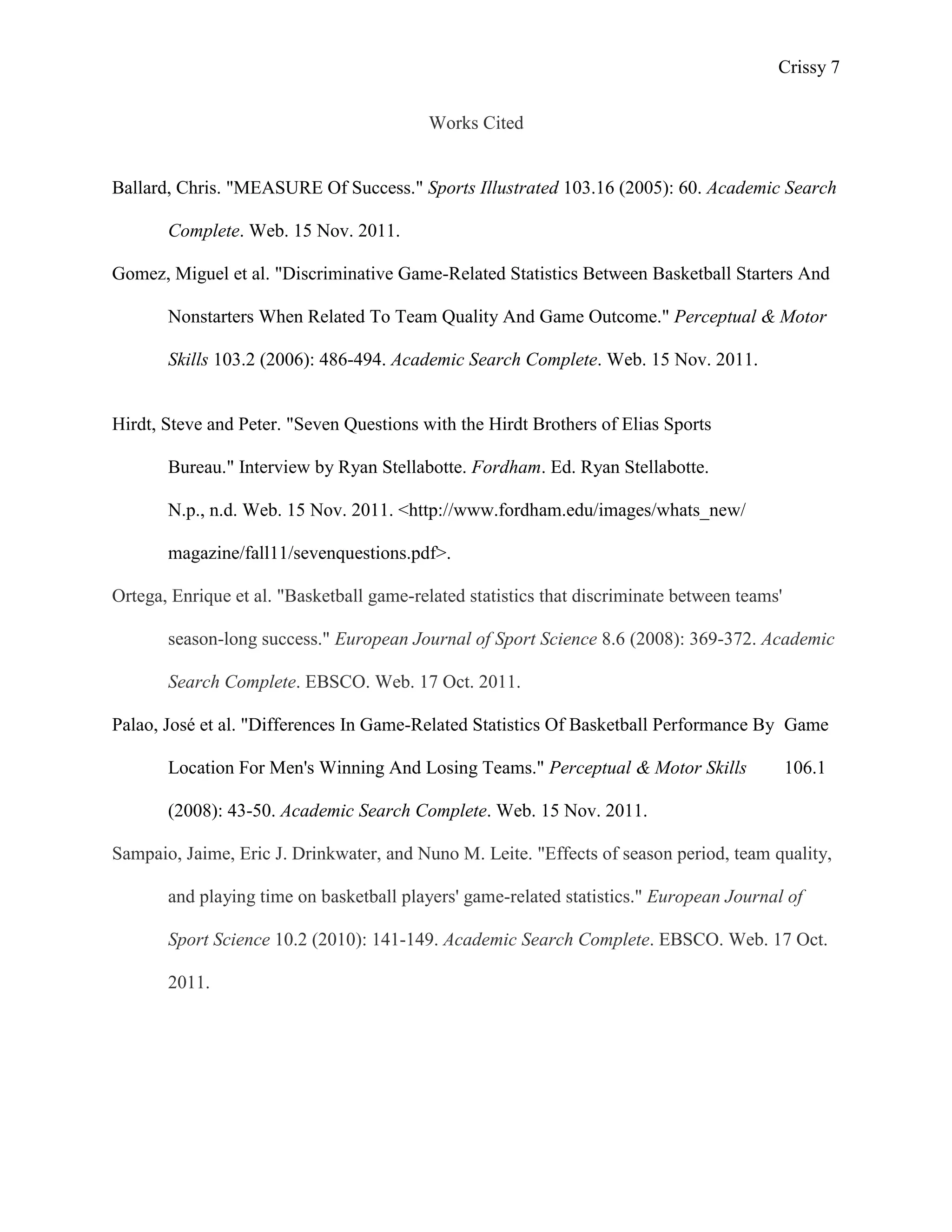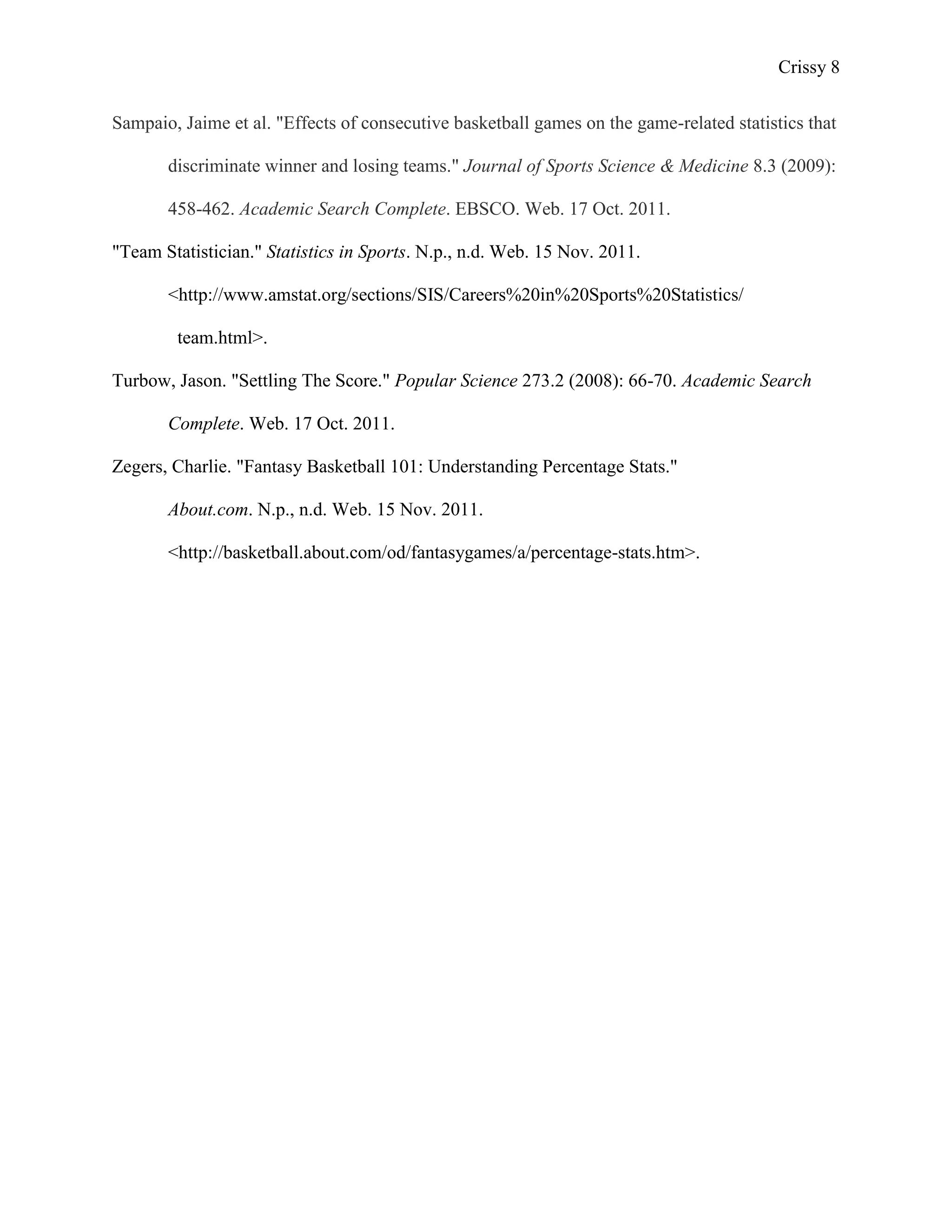The document discusses the role and importance of sports statisticians in analyzing game statistics. It explains that statisticians record various metrics during games like field goals, assists and rebounds. They then analyze the statistics to provide insights for coaches, players and fans. Studies have shown that teams performing better in assists, steals and defensive rebounds tend to be more successful. Statisticians also examine how factors like home/away games and starters/non-starters influence statistics and outcomes. Their analysis is valuable for improving team strategies and preparation.
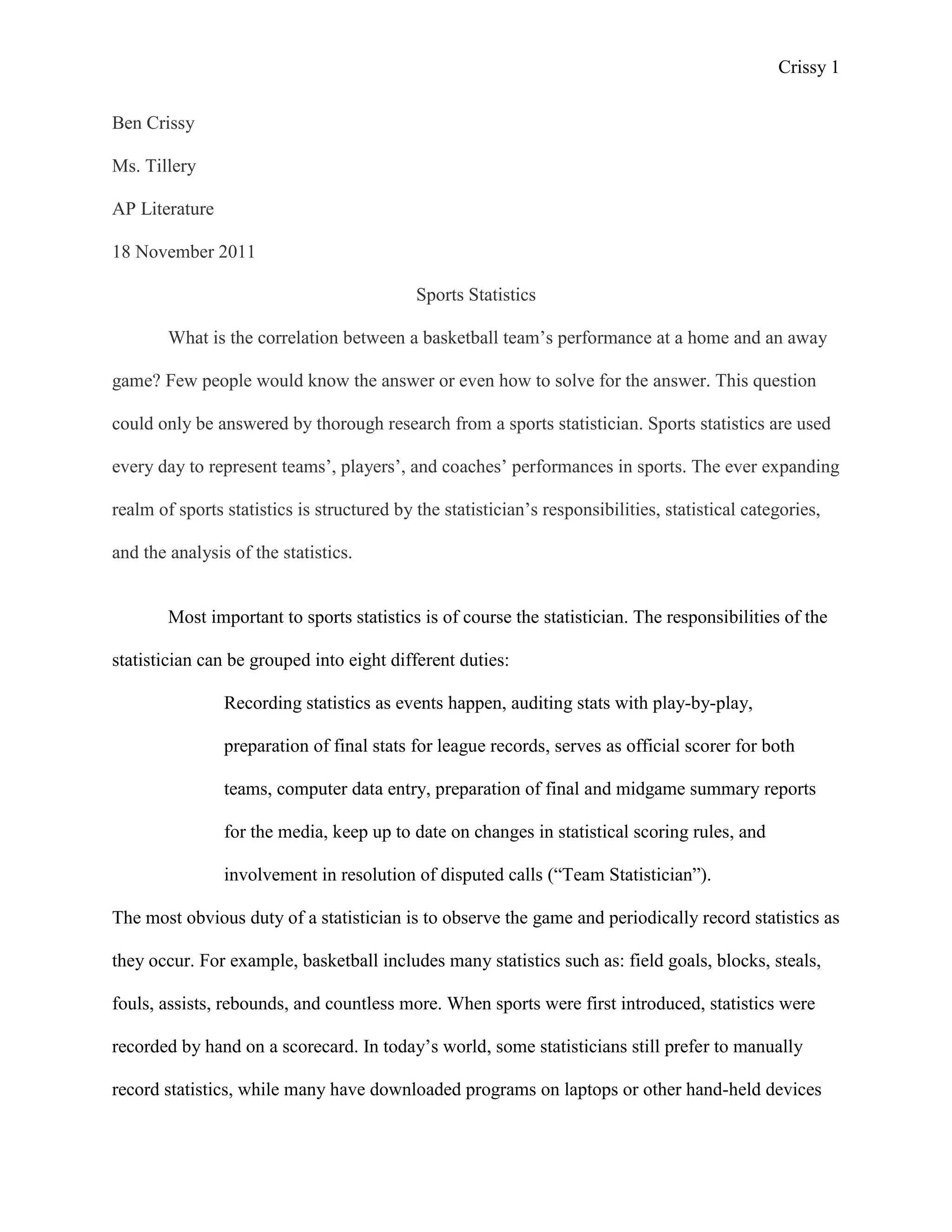
![Crissy 2
to minimize the time it takes to record so they can focus more on the game. Sports statisticians
need to be able to multitask and operate quickly in order to meet the demands of the press, the
teams, and the fans.
In the same way that statisticians report to the media, the media reports to the fans.
Fantasy sports have become increasingly popular as of late; they engage the fan by
accompanying points to real life statistics in separate stat categories. Although the fans do not
need to calculate the data, most of the statistics can be easily determined:
For most statistical categories - points, rebounds, blocks, steals - that's simple:
add 'em up. But for the percentage stats - most commonly field goal percentage
and free throw percentage - it's not that easy. For those categories - and any others
that consider a team's percentage as opposed to a team's total - you tally the
numbers that make up the percentage, and then divide (Zegers).
Statistics such as points, rebounds, and blocks should be commonplace to any basketball fan.
The already easy to observe statistics become even more user friendly with fantasy sports.
However, statistics can create a facade to disguise glaring defects, for example “[Juwan] Howard
was 10th in the league in scoring average, but fourth in minutes per game and third in field-goal
attempts. These numbers suggest that he wasn't really making the most of his time on the court,
something the Washington organization would have noticed if they had been looking at the right
metrics” (Turbow). At a glance, Howard would appear to be an outstanding player by viewing
his core stats that are recorded during the game. Upon further evaluation, it can be revealed that
many players, as in Howard’s case, are not always as successful as they may seem at first.
Evaluating all of a player’s statistics as a whole is the only true way to identify a player’s
strengths.](https://image.slidesharecdn.com/seniorprojectpaper-120415195456-phpapp02/75/Senior-Project-Research-Paper-2-2048.jpg)
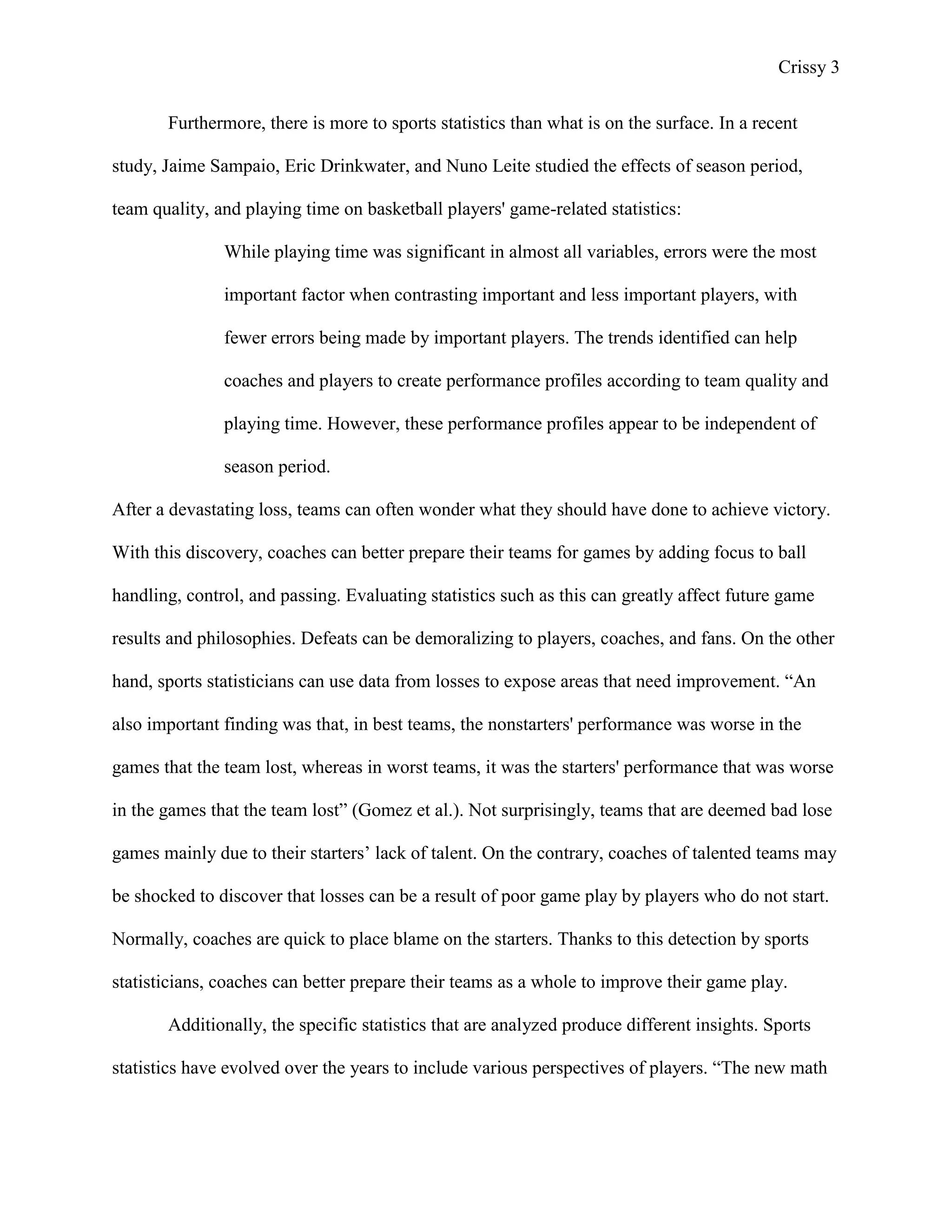
![Crissy 4
is not just for evaluating individual player value. It's also a useful tool in scouting team
tendencies” (Ballard). Advanced statistics such as player efficiency ratings can be extremely
helpful in deciding which player to start and who to bench. However, these statistics can also be
useful if they are used to scout the matchup and determine the opposing team’s strengths and
weaknesses. Statistics are commonly inspected to review past events. On the other hand, stats
can be used to forecast future results. “One of the dangers [of evaluating statistics] is to draw on
historical information that seems to be telling you something will happen and forget that’s why
they play the games. I know it’s a cliché, but things reach cliché status for a reason” (Peter
Hirdt). Statistics do not only display what happened in a game; they can also be used to predict
what will happen in a game. Companies such as the Elias Sports Bureau that have been in the
business for numerous years can predict the outcome in a game based on past games. Statistics
that display mind boggling information such as the probability of a basketball team winning
while down by 10 points in the fourth quarter frequently appear on the television to inform fans
watching of the rarity of such an event occurring. Statistics not only tell about the past, but they
can also determine the expected outcome of a game.
Thoroughly evaluating statistics after games can prove to be beneficial for preparation of
future games. Successive games can really take a toll on a team and affect their performance. “A
discriminant analysis allowed identifying the two point field goals made, the defensive rebounds
and the assists as discriminators between winning and losing teams in all three games” (Jaime
Sampaio, et al.). This study was compiled in an effort to study the recorded statistics of winning
and losing teams that played in consecutive games. With this information, a sports statistician
can conclude that shot selection, ball control, and passing are essential to a team’s performance](https://image.slidesharecdn.com/seniorprojectpaper-120415195456-phpapp02/75/Senior-Project-Research-Paper-4-2048.jpg)
